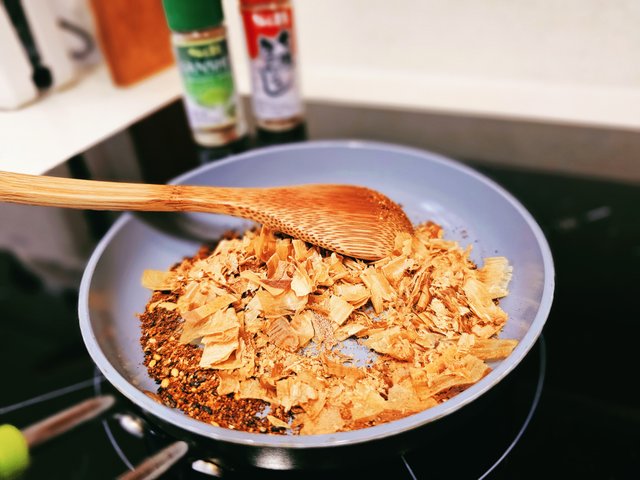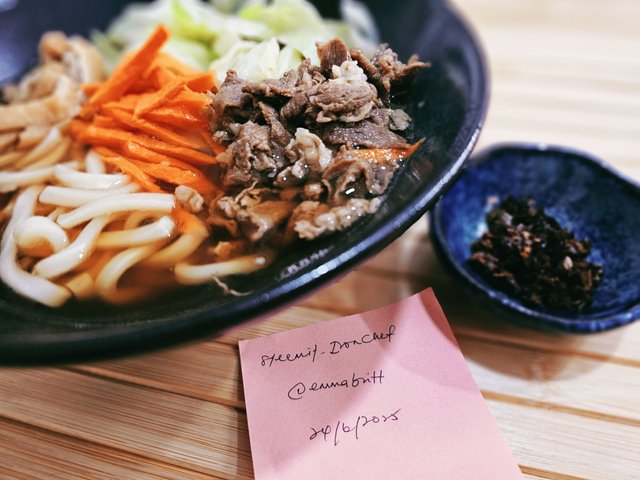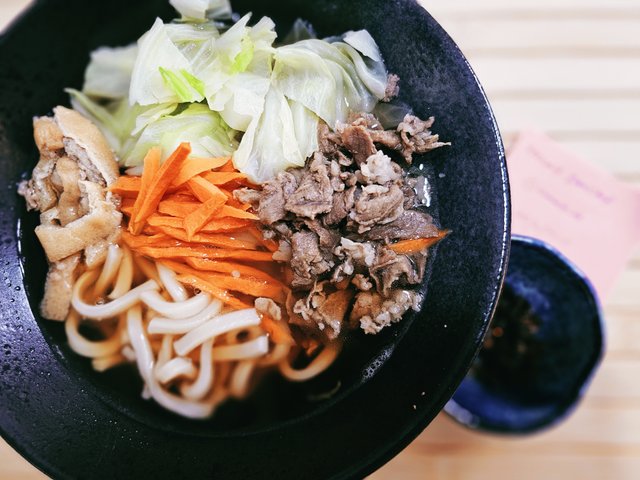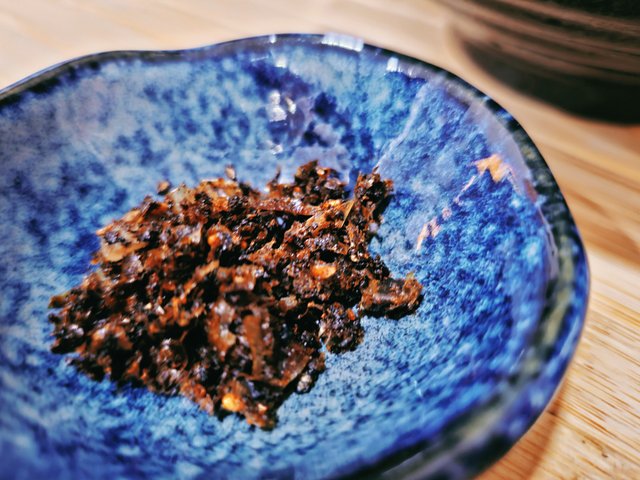Daily Menu Delicacies Week No.76 .24/06/2025 // Yoshida Udon
Just like any other dishes around the world, Japanese udon also has various regional varieties: there's Tanuki Udon with its crispy twist from added tenkasu, Ankake Udon with its thick, warming broth, Kamatama Udon with its egg-based sauce, Yakiudon - a delicious stir-fried dish, and so many more.
There are just so many variations, and I'm taking my sweet time exploring and trying to make them all.
Udon has become a staple in my kitchen; there's always udon in my freezer, fridge, or pantry, depending on which type I managed to get.
I personally prefer the frozen type for its chewiness. The pantry dried type is also chewy, but I prefer my udon thicker. Lastly, if all else is unavailable, I'll have to settle for one manufactured in Malaysia or Singapore. They're not as chewy for me, but at least I get my udon fix!
I got to know about Yoshida Udon through The Road to Red Restaurants on Netflix.
The show didn't provide many details on this particular udon, but perhaps it wasn't the show's fault - my Japanese language skills are still at a very basic level. At the time I watched it, I hadn't even started my Duolingo yet!
It took some guessing, and I had to conduct some research on my own. Unfortunately, I couldn't find much information because I'd missed an important detail: horsemeat udon.
Personally, I've never tried horse meat before, but the rest of the ingredients looked perfectly good - cabbage and carrot, which most people around the world eat, right?
About the type of meat, it can easily be substituted with beef or pork. I used beef for my version. It doesn't have to be sukiyaki-level sliced beef because we're going to stir-fry it anyway. So, I usually opt for the more economical cuts made from leftover pieces.
Yoshida Udon originated from Fujiyoshida, located at the base of Mt. Fuji. Known for its exceptionally tough and chewy texture, setting it apart from other udon dishes - which is exactly my kind of udon!
I think if I'm ever going to Japan again, this shall be on my must-visit list! With over 60 establishments specializing in Yoshida Udon in the area, each offering a distinct take on this local delicacy, it's a dream for me to try them all - just like when I was in Vietnam trying all the different beef pho everywhere.
Most broths in Japanese cooking are dashi-based, made with kelp and bonito flakes. And as usual, they're seasoned with the three most commonly used ingredients: shoyu, mirin, and sake.
Suridane is a condiment served on the side, made from various Japanese chili peppers and bonito flakes.

For those seeking an extra kick, the optional condiment suridane adds a spicy element to the original udon experience. What I usually do is savor the first few bites in its original form before making any additions.
It's the same approach I take with ramen and everything else. I think I get the best of two worlds this way - in my case, two distinct flavors from one dish. Learning about Japanese food has truly changed a lot for me; I used to add condiments in before I actually tasted the original form!
©Britt H.
I'm inviting @wakeupkitty @dreeyor @xiao-aine to participate in this too.
Thank you for reading this.



Hola @emmabritt
Has realizado una publicidad para el concurso de Recetas del día.
La dinámica que dices utilizar como lo es delicias del menú diario, es muy diferente.
Te recomiendo que leas cada concurso antes de hacer tus participaciones.
También te invito a verificarse en la comunidad.
https://steemit.com/steemit-iron-chef/@steemit-ironchef/732h1g-verificacion-de-usuarios-user-verification
Thank you for the reminder.
Congratulations, you have enabled UVF by @hive-169911
Common UVF commands:
1.uvf_info
Reply any post use "!uvf_info"
Display your UVF information